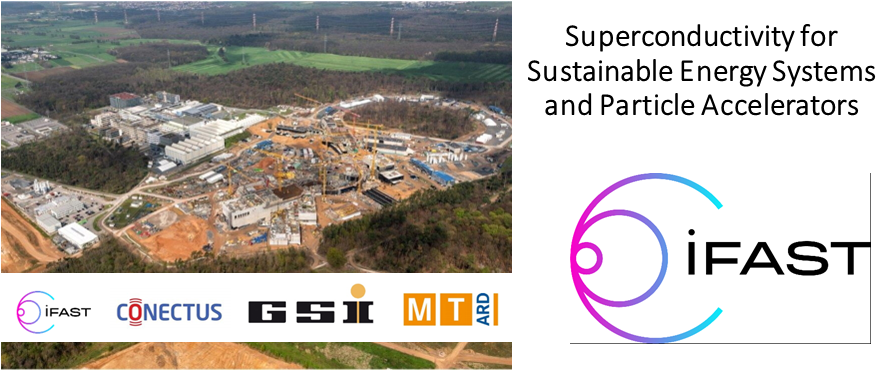Sprecher
Beschreibung
The European project IFAST's Work Package 8 (WP8) focuses on advancing Innovative Superconducting Magnets, with a specific emphasis on exploring the potential of Canted Cosine Theta (CCT) magnets wound with High-Temperature Superconductors (HTS). These superconducting magnets have the capacity to make a significant impact by reducing the size and cost of synchrotrons and gantries used in research and hadron therapy. This development enhances the sustainability of these systems and improves their overall stability. The ultimate objective of the work package is to realize a straight Canted Cosine Theta (CCT) layout magnet capable of generating a central dipole field of 4 Tesla, with an intended ramp rate of 0.4 Tesla per second. However, for the initial phase, a more conservative ramp rate ranging between 0.15 and 0.2 Tesla per second is deemed acceptable. The preliminary design study delves into the cable configurations, with a specific focus on protection, AC losses, and thermal aspects. However, working with HTS materials poses specific challenges related to cable production, magnet design, and cost management, which necessitate innovative solutions. Furthermore, the research and development efforts aimed at studying HTS magnets are part of a collaborative initiative in synergy with the project IRIS (Innovative Research Infrastructure for Applied Superconductivity) of the Next Generation Europe program. IRIS aims the development of an HTS magnet capable of generating magnetic fields of 8-10 Tesla, to be operated within the temperature range of 10-20 Kelvin. In this synergy, IFAST WP8 explores the boundaries of superconducting magnets toward high-performance, cost-effective, and sustainable magnet systems for scientific and medical applications.

